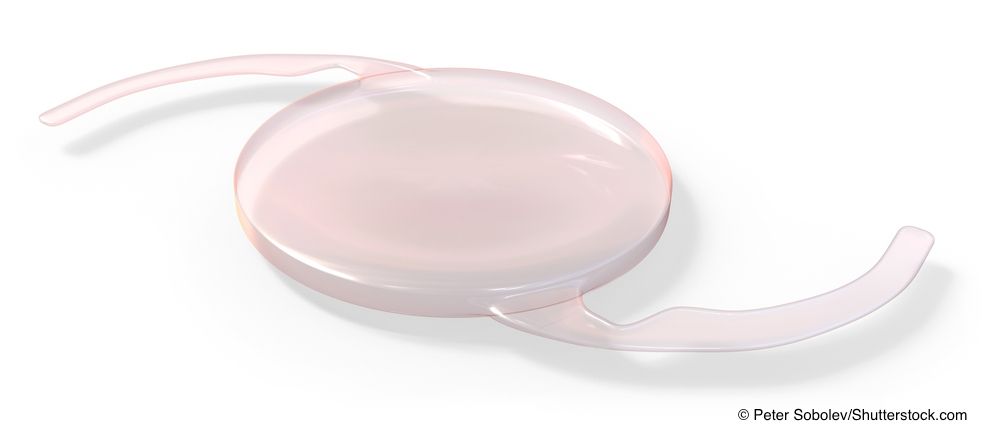Article
Toric, presbyopia-correcting IOLs good options for glaucoma patients
Steven Vold, MD, reports that toric IOLs provide an accurate, safe, and convenient way to correct astigmatism and uncorrected distance vision for glaucoma patients, while patients wanting presbyopic correction have IOL options to fit a range of visual needs.

By Cheryl Guttman Krader;Reviewed by Steven D. Vold, MD
Innovations in glaucoma surgery and intraocular lens (IOL) technology are enabling delivery of optimal visual outcomes for glaucoma patients needing cataract surgery, said Steven D. Vold, MD.
“We must not underestimate the negative impact of glaucoma on quality of life,” explained Dr. Vold, founder and CEO, Vold Vision, Fayetteville, AR. “The concerns include visual field loss from glaucoma and issues related to medication use, including side effects and cost.
Now, surgeons have glaucoma procedures that can be combined with cataract surgery to control glaucoma and reduce medication use, which do not induce significant astigmatism that leads to loss of best corrected visual acuity, Vold added.
“In addition, we have toric IOLs that provide a very accurate, safe, and convenient way to correct several diopters of astigmatism and give patients good uncorrected distance vision,” Vold said. “For patients wanting presbyopic correction, there are now IOL options to fit a range of visual needs and including some that do not significantly reduce contrast sensitivity.”
Toric IOL preferred
Dr. Vold said that a toric IOL is the preferred implant option for a patient with glaucoma needing cataract surgery. Citing results from the FDA study leading to the approval of one available model, he noted that uncorrected visual acuity (UCVA) of 20/40 or better was achieved in 94% of implanted eyes. Using current technology for guiding IOL placement instead of manual marking, it may be possible to achieve even better outcomes, Dr. Vold suggested.
“Clearly, placement precision is important in optimizing the visual outcome after toric IOL surgery because even a single degree of misalignment will reduce the amount of astigmatic correction by 3.3%,” Dr. Vold said.
“With new markerless methods that allow for intraoperative alignment of the toric IOL through the microscope oculars and with the use of intraoperative aberrometry, we can now provide LASIK-type refractive and visual outcomes,” he added. “This really changes the ballgame for our patients.”
Dr. Vold reported that using the new surgical technologies for toric IOL cases, UCVA of 20/40 or better is being achieved in up to 95% of eyes, and between 60% and 65% of eyes are seeing 20/20 or better uncorrected.
MIGS and presbyopic IOLs
Dr. Vold said that combining a micro-invasive glaucoma surgery (MIGS) procedure with implantation of a presbyopic IOL is an excellent option for patients with mild-to-moderate glaucoma needing cataract surgery. The currently available array of presbyopia-correcting IOLs allows surgeons to match the IOL to the individual’s vision needs.
IOLs with lower adds are good for patients who want to maintain optimal distance vision. There are also options for patients who prioritize intermediate or close vision as well as toric versions of some lenses for patients with significant astigmatism.
The lenses can also be used in a mix-and-match strategy with placement of a more distant-dominant, presbyopia-correcting IOL in the dominant eye and a different lens in the non-dominant eye to optimize intermediate or near vision.
“Newer extended range of vision presbyopia-correcting IOLs are also overcoming the issue of greatly diminished contrast sensitivity that was a problem with multifocal technology,” Dr. Vold said. “Regardless of the procedure and IOL technology we choose, managing patient expectations is important.”
Steven D. Vold, MD
This article is based on a presentation given by Dr. Vold at the Glaucoma Subspecialty Day meeting held prior to the 2017 American Academy of Ophthalmology meeting. Dr. Vold receives grants/research support from Allergan, InnFocus, Ivantis, Glaukos and Alcon Laboratories. He is a consultant to Glaukos, Alcon Laboratories, Allergan, Iridex, Glaukos, and Neomedix.
Newsletter
Don’t miss out—get Ophthalmology Times updates on the latest clinical advancements and expert interviews, straight to your inbox.




